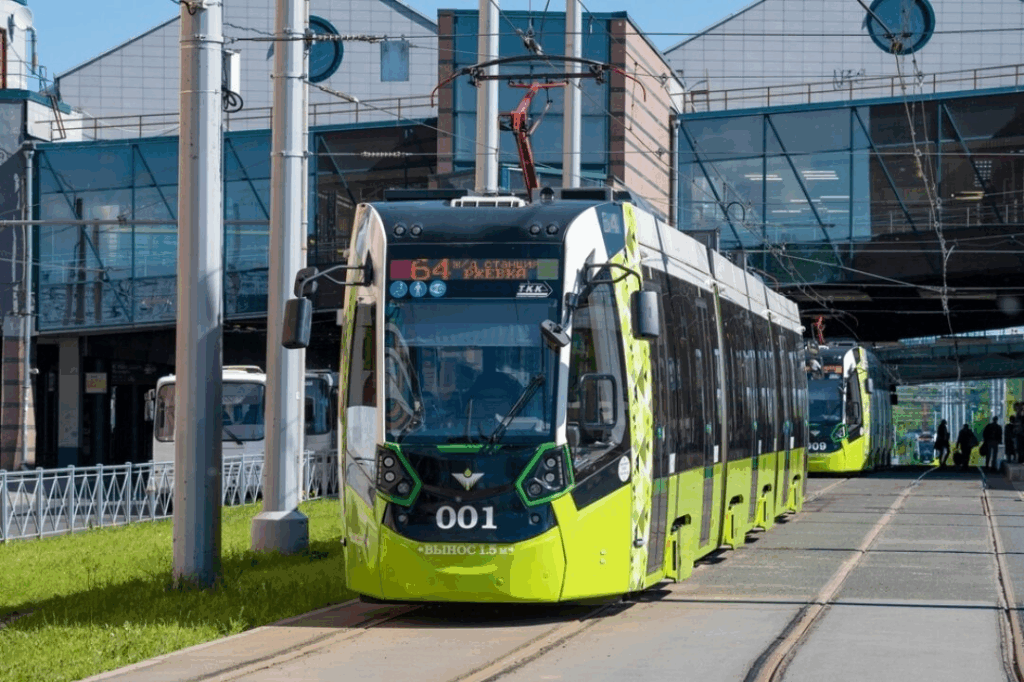
Saint Petersburg, Russia’s cultural capital and a city of imperial grandeur, is not only renowned for its palaces, canals, and museums but also for its extensive and historically rich tram system. Once one of the largest in the world, the tram network of Saint Petersburg has been an integral part of the city’s public transport for over a century, reflecting both the city’s industrial ambitions and its evolving urban landscape.
A Legacy on Rails
The history of the Saint Petersburg tram dates back to the late 19th century. The first horse-drawn tram (or konka) began operating in 1863, providing a modest but effective means of transportation for the city’s residents. However, with the rise of industrialization and a growing population, the demand for more efficient public transport led to the electrification of the system.

In 1907, the first electric tramcar rolled through the streets of Saint Petersburg (then known as Petrograd). It marked the beginning of a new era, turning the tram into a symbol of modernity and progress. By the 1930s, the network had expanded dramatically, making it one of the most extensive tram systems in the world.
The Golden Age
During the Soviet period, especially from the 1950s to the 1980s, trams played a crucial role in the daily life of Leningrad (the city’s name during Soviet times). The system stretched across the entire city, reaching into the most remote districts. Trams were not just a means of transport—they were cultural fixtures, appearing in films, literature, and everyday conversations.

At its peak, the Saint Petersburg tram system had over 600 kilometers of track and more than 2,000 tramcars in operation. It served millions of passengers annually and was an affordable, reliable, and environmentally friendly way to navigate the city.
Decline and Transformation
The fall of the Soviet Union in the 1990s brought significant changes to the city’s infrastructure. Underfunded and poorly maintained, the tram system began to decline. Many routes were dismantled to make way for private car traffic and new commercial developments. The once-proud network shrank drastically, particularly in the city center, where tram lines were removed to reduce congestion.

Despite this decline, Saint Petersburg’s trams never disappeared entirely. Certain districts, especially in the southern and eastern parts of the city, continued to rely heavily on them. Local advocates and urban planners also began to recognize the environmental and cultural value of preserving tram services.
Modern Trams and the Road Ahead
Today, the Saint Petersburg tram system is undergoing a slow but steady revival. New low-floor trams with modern amenities have been introduced, improving comfort and accessibility for passengers. Some routes have been optimized for better efficiency, and infrastructure upgrades continue to be made.

Importantly, trams are increasingly being seen as part of a sustainable future for urban transport. With growing concerns about pollution and traffic congestion, many cities worldwide are turning back to trams, and Saint Petersburg is no exception. Projects aimed at expanding and modernizing the tram system are now under discussion, supported by both local authorities and international investors.
A Cultural Icon
For many residents, trams are more than just vehicles—they are a nostalgic reminder of the city’s past and a symbol of its identity. The familiar hum of a tram gliding over steel tracks, the vintage design of older models, and the quiet rhythm of daily commutes have all become part of Saint Petersburg’s unique charm.

In a city known for blending history with modernity, the tram stands as a perfect metaphor. It reminds us that even in a rapidly changing world, some traditions are worth preserving—not just for their utility, but for their soul.